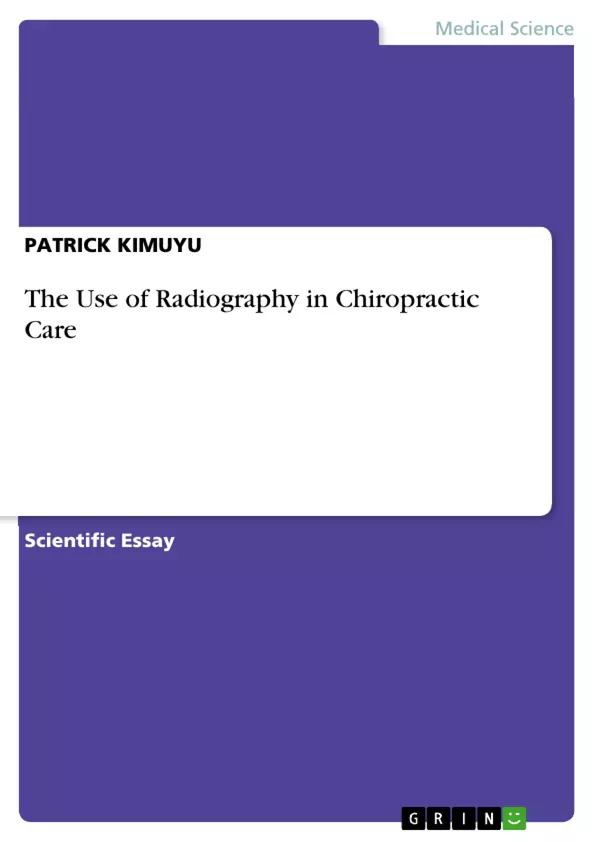Over the years, scholars and experts have observed a correlation between the increase in health care overheads and the high pervasiveness of neck and low back pain (LBP) in the fast growing population worldwide. Although spinal imaging may have significant benefits of identifying less common causes of low back pain and neck, imaging services’ misuse and overuse, an occurrence that has been widely noticed, contain adverse effects on individuals.
After obtaining of the first spinal x-rays in the United States of America in 1910, Chiropractic Techniques have since then employed spinal radiology with the aim of detecting and measuring spinal subluxation. Different studies have indicated that the idea of chiropractors in specializing in musculoskeletal disorders management remains to be the best, effective and safe approach, similar to the traditional back pain physiotherapy and medical care. However, studies have demonstrated knowledge practice gaps in different health care practitioners in red flags assessment alongside the use of diagnostic imaging. In addition, misuse and overuse of imaging services for spinal implications have increased in chiropractic and medical practice. Practically, overuse and misuse of imaging causes unnecessary procedures and tests that are linked to increased risks and side effects.
Inhaltsverzeichnis (Table of Contents)
- Use of Radiography in Chiropractic
- Introduction
- Routine Full-Spine Imaging in Chiropractic
- Reliability and Validity of Spinal Radiographic Analysis
- Criticism of Spinal Radiographic Analysis
- Conclusion
Zielsetzung und Themenschwerpunkte (Objectives and Key Themes)
This essay aims to provide a comprehensive overview of the rationale behind the practice of routine full-spine imaging in chiropractic. It examines the validity, reliability, and clinical relevance of spinal radiographic analysis methods employed by chiropractors.
- The use and misuse of spinal imaging in chiropractic practice.
- The debate surrounding the reliability and validity of spinal radiographic analysis.
- The potential risks and limitations of routine full-spine imaging, including radiation exposure and false diagnoses.
- The importance of evidence-based decision making in chiropractic care.
- The need for further research on the effectiveness of routine full-spine imaging.
Zusammenfassung der Kapitel (Chapter Summaries)
- Use of Radiography in Chiropractic: This section introduces the topic and discusses the prevalence of neck and low back pain. It also highlights the potential benefits and drawbacks of spinal imaging, with emphasis on the misuse and overuse of such services.
- Routine Full-Spine Imaging in Chiropractic: This section examines the argument against routine full-spine imaging, highlighting its potential to increase cancer risks and failing to improve patient outcomes.
- Reliability and Validity of Spinal Radiographic Analysis: This section delves into the reliability and validity of spinal radiographic analysis methods, focusing on the challenges of ensuring consistency and precision in measurements.
- Criticism of Spinal Radiographic Analysis: This section presents criticisms of spinal radiographic analysis, arguing that it is physiologically and anatomically flawed and lacks proven clinical benefits for patients.
Schlüsselwörter (Keywords)
The primary keywords and focus topics of this essay include routine full-spine imaging, chiropractic practice, spinal radiographic analysis, reliability, validity, radiation exposure, evidence-based practice, and patient outcomes.
- Quote paper
- PATRICK KIMUYU (Author), 2016, The Use of Radiography in Chiropractic Care, Munich, GRIN Verlag, https://www.grin.com/document/381345



